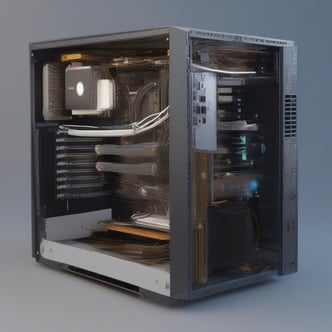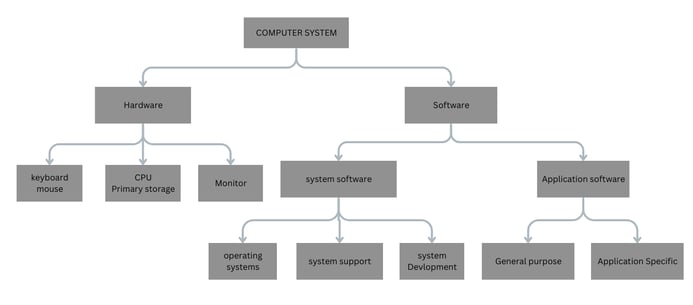Computer system
Introduction to computer Hardware and software
pavitra
11/16/20242 min read


COMPUTER SYSTEM
A computer system is the complete setup of hardware and software components that perform computing tasks. It includes everything from physical devices to the programs that run on them, enabling the system to process data, execute applications, and interact with users.
Computer hardware refers to the various physical components of a computer system.
Central Processing Unit (CPU): Executes instructions and processes data.
Memory:
RAM (Random Access Memory): Temporary storage for data and instructions.
Storage Devices: Hard drives (HDD), solid-state drives (SSD), or external storage
Input Devices: Devices like keyboards, mice, microphones, etc., that allow user input.
Output Devices: Devices like monitors, printers, or speakers display results.
Motherboard: This is the main component of the computer system, connecting all the hardware components and ensuring they work together in perfect harmony. It is like the human body, with all the necessary organs that are ready for use by our brain.
Computer software is a group of computer programs and the data that goes along with them, giving instructions on how a computer should operate and what tasks it should perform. In other words, software encompasses one or more programs along with the information they use to function effectively. It is stored on the computer for some purpose.
The Operating System (OS) is a vital part of a computer system. It manages hardware and software resources, ensuring they are utilized efficiently and effectively. Application Software: Programs for specific tasks (e.g., web browsers, games).
Utilities are essential tools for system maintenance, providing practical functions such as antivirus software and file managers, which are crucial for keeping your system running smoothly.


COMPUTER LANGUAGES
In order to communicate with the computer user also needs to have a language that should be understood by the computer. For this purpose, different languages are developed for performing different types of work on the computer. Basically, languages are divided into two categories according to their interpretation.
1. Low-Level Languages
Low-level languages are closer to the machine's native language and are directly executed by the computer hardware. They are specific to a particular computer architecture and require detailed instructions for the hardware.
Machine Language: The most basic language, written in binary (0s and 1s), and directly understood by the computer's CPU. Each type of computer has its own machine language.
Assembly Language: A step above machine language, it uses mnemonics or symbolic codes (e.g., MOV, ADD) to represent instructions. Assembly languages are also architecture-specific, requiring an assembler to convert code into machine language.
2. High-Level Languages
High-level languages are closer to human languages and abstract away most hardware details, making programming easier and faster. These languages are more portable and work across various computer architectures.
Examples: C, C++, Python, Java, JavaScript, Ruby, and many others.
High-level languages typically require a compiler or interpreter to convert code into machine language.
